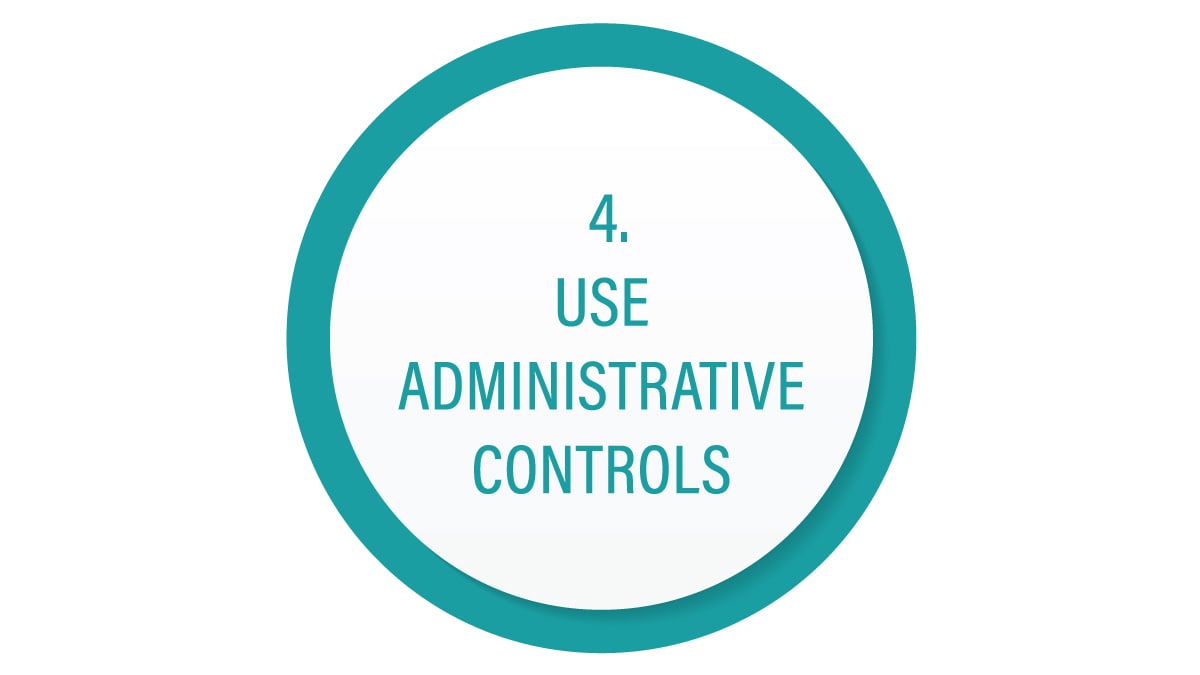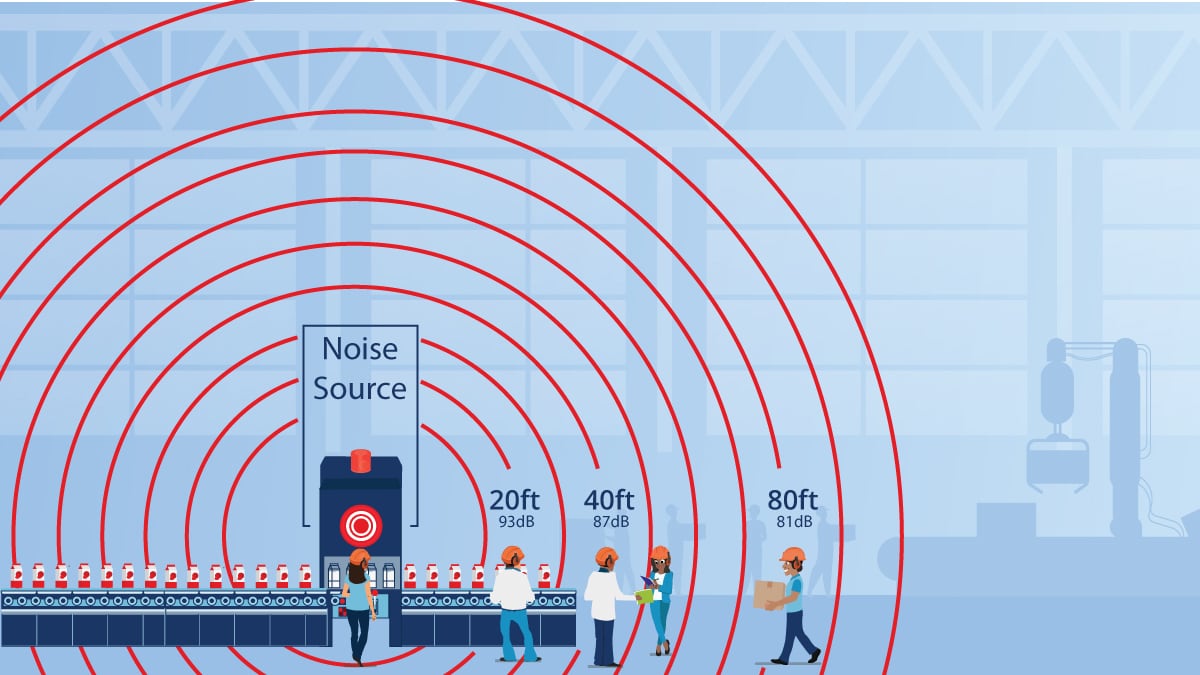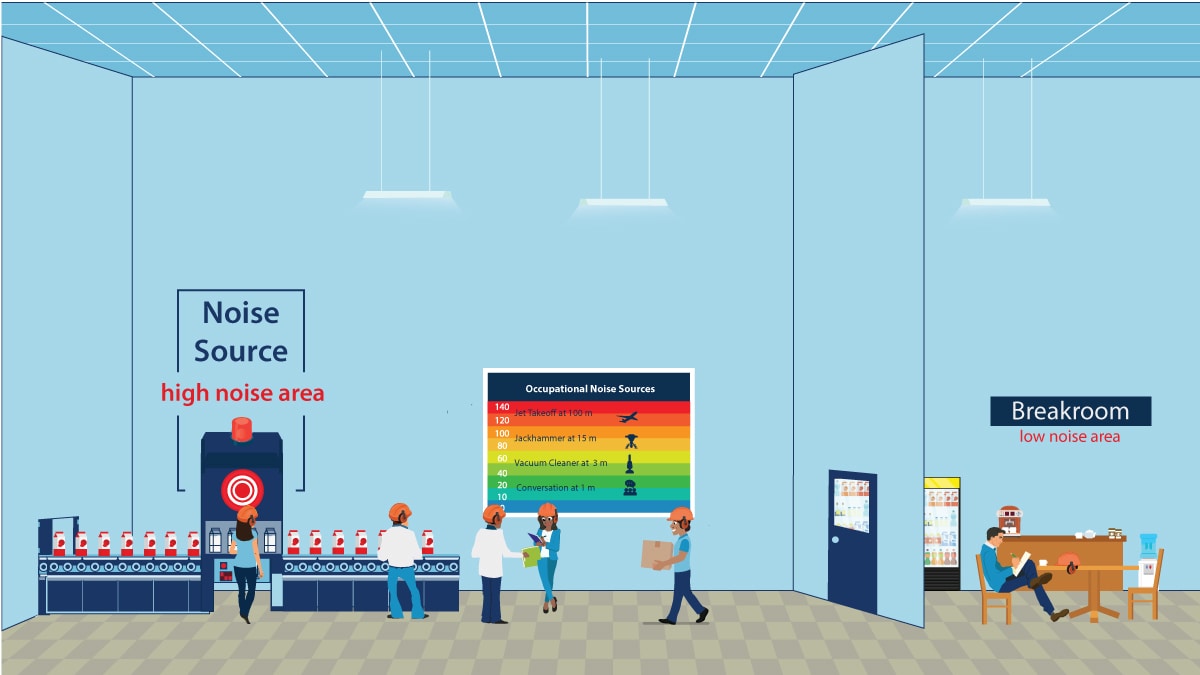At a glance
If you cannot eliminate or reduce noise to a safe level, simple changes in scheduling and operations can significantly decrease the total amount of noise exposure for each worker. These types of changes are known as administrative controls.

Understand when to use administrative controls
You can use administrative controls alone or in combination with other methods, such as engineering controls and hearing protection devices. In some cases, using controls can prevent the need for a hearing loss prevention program.
As with all controls, you must ensure noise exposures are effectively reduced through dosimetry or a sound level meter assessment. When changing work practices, the following questions will help you reduce noise exposure.
- How close are workers to the noise source?
- Can you reduce the duration of exposure?
- Are employee behaviors increasing noise exposure?
Did you know?
It is important to remember some key concepts when incorporating administrative controls:
- Administrative controls require consistent enforcement.
- Reducing the time workers are exposed to loud noise lowers their overall exposure.
- Train workers to be aware of noise hazards and provide them with strategies to limit exposure.
- Do not use an administrative control if it will increase another employee's noise exposure or the number of exposed workers.
Increase distance between workers and the noise source
If possible, increase the distance between workers and noise sources.
Doubling the distance from the noise source can decrease noise levels by as much as 6 dB, as long as you aren't moving closer to a secondary noise source. Over time, even small changes in noise level can have large impacts on total exposure.
Other ways to use distance to reduce worker noise exposure include:
- Encourage workers to increase distances from noisy processes that do not require constant monitoring.
- Relocate unrelated tasks to quieter areas.
- Increase the distance between individual noise sources to lower the combined noise level.
- Use tethered or remote-control panels that allow you to control the noisy process at a greater distance.

Reduce duration of worker exposures
Changes in shift length or tasks involving noise can decrease overall exposure:
- Minimize the duration of noise exposure:
- Give workers shifts doing quieter tasks.
- Provide quiet areas for employee lunches and breaks.
- Schedule noisy tasks at different times from each other.
- Minimize the number of workers exposed to noise:
- Reduce the number of workers needed to perform a noisy task.
- Move workers not involved with a noisy process out of the area.

Look for other ways to avoid occupational hearing loss
- Discourage listening to music at a high volume, especially if listening over a noisy work environment.
- Use alternate forms of communication for communication-intense jobs such as radio headsets with hearing protection.
- Don't prop open doors that lead to noisy machinery (unless required by other safety concerns).
- Keep doors and windows closed if environmental noise (e.g., traffic, neighboring operations) is significantly adding to noise exposures
- Be aware that the presence of certain chemicals, called ototoxicants, can worsen effects of noise.
- Substances including certain pesticides, solvents, and pharmaceuticals that contain ototoxicants can negatively affect how the ear functions, causing hearing loss, and affect balance. See the OSHA/NIOSH safety and health information bulletin for more information on ototoxicants.
